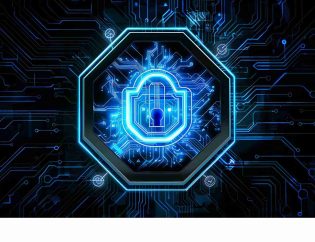
Table of Contents
Introduction
Understanding XDR and Its Importance
Why a Managed Approach Matters
Benefits of a Managed XDR Approach
How Security Systems Strengthen Your Protection
Implementation Strategies for XDR
Challenges in Deploying XDR Solutions
Case Study: Success with Managed XDR
The Growing Role of Automation in Cybersecurity
Conclusion
Introduction
Extended Detection and Response (XDR) helps protect businesses by combining different security tools into one system. Many companies find it hard to manage XDR on their own, so using a managed service makes it work better and keeps them safer. With expert help, businesses can spot threats faster, respond quickly and stay protected.
Understanding XDR and Its Importance
XDR (Extended Detection and Response) is an advanced security system that helps protect businesses by combining threat detection, analysis and response across different areas like devices, networks and the cloud. Unlike older security tools that work separately, XDR gives a clear, unified view of security, helping organizations spot and fix threats more easily.
XDR watches for potential threats across the whole IT system, giving real-time updates and taking action before damage occurs. By checking data from all security areas, it can notice unusual activities and find cyber-attacks faster. This helps businesses respond quicker and lessen the harm from attacks.
In today’s world of complex online threats, XDR is crucial for businesses that want to improve their security and stay safe.
Why a Managed Approach Matters
- Expertise: Managing XDR in-house requires specialized skills and knowledge, which many companies may not have in their teams. It takes experience to handle complex cybersecurity tools effectively.
- Resources: Running XDR systems requires a significant investment in time, money and manpower. The resources needed for continuous monitoring, analysis and response can stretch a company’s capabilities.
- Real-Time Threat Intelligence: A managed XDR service offers access to up-to-date threat data, ensuring that security teams can stay ahead of emerging risks. This proactive approach improves the organization’s defense.
- Ongoing Improvements: Experts continuously update and optimize the XDR system to ensure it can detect and protect against evolving threats, keeping the system effective over time.
- Focus on Core Activities: By outsourcing XDR management, businesses can concentrate on their main operations while security experts handle threat protection, reducing the burden on internal teams.
- Quick Threat Management: Managed XDR solutions help detect, analyze and respond to threats more quickly, minimizing the potential impact of an attack.
- Cost-Effective: Using managed XDR eliminates the need for hiring, training and maintaining an in-house security team, reducing overall cybersecurity costs.
Benefits of a Managed XDR Approach
- Proactive Threat Detection: Managed XDR keeps an eye on your systems all the time, looking for any signs of trouble. This helps catch problems early, before they turn into bigger security issues.
- Faster Response Times: When a threat is found, managed XDR can automatically react and fix things quickly. Security experts are also ready to help right away, making sure the issue is solved fast to avoid any damage.
- Reduced Operational Costs: With a managed service, you don’t need to hire and train a big security team. This saves you money, as you get top-notch protection without the extra cost of an in-house team.
- Scalability: As your business grows, so do your security needs. Managed XDR can grow with you, keeping your systems safe no matter how big your company gets.
- Regulatory Compliance: Managed XDR helps make sure your business follows important security rules, keeping you compliant and avoiding any legal trouble.
How Security Systems Strengthen Your Protection
Security systems protect by watching for and reacting to potential threats. Here’s how they help:
- Threat Detection: Security systems use smart tools like AI to spot unusual activity or possible threats before they cause harm. This helps detect issues early and take quick action.
- Automatic Response: Once a threat is found, many systems can automatically block or fix it, stopping further damage without needing a person to step in.
- Ongoing Monitoring: Security systems keep an eye on your network, devices and data all the time, looking for any signs of trouble. This ensures you stay safe from new and changing threats.
Implementation Strategies for XDR
| Strategy | Description |
| Assessment & Planning | Evaluate security, identify weaknesses |
| Deployment & Integration | Install XDR, integrate with tools |
| Continuous Monitoring | 24/7 monitoring, real-time threat intel |
| Incident Response | Plan for quick action, automated response |
| Ongoing Optimization | Regular updates, adapt to new threats |
Challenges in Deploying XDR Solutions
Deploying XDR can be challenging due to a few common issues:
- Integration Complexity: XDR needs to work well with your existing security tools, like firewalls or antivirus software. Making everything work together smoothly can take time and effort.
- Resource Limitations: XDR requires experts to manage it, but many companies don’t have enough skilled cybersecurity professionals. Without the right team, it can be tough to use XDR properly and keep your business safe.
- False Positives: Sometimes XDR systems send alerts for things that aren’t actual threats. These false alarms can make your security team overlook real threats, so it’s important to manage these alerts carefully.
- Data Privacy Concerns: XDR systems need to protect personal data and follow privacy rules like GDPR. Businesses must set up XDR in a way that keeps data safe while stopping cyberattacks.
Case Study: Success with Managed XDR
A large global company faced frequent security breaches because their old systems couldn’t detect and respond to threats quickly. There were gaps in their security setup, which let cyberattacks slip through.
To solve this, the company started using a managed XDR solution. This provided expert management and 24/7 monitoring. After using the new system, they saw great improvements:
- 50% Faster Response Time: With managed XDR, the company responded to security issues twice as fast, stopping attacks before they caused damage.
- 70% Better Threat Detection: The XDR system became much more accurate, spotting more threats and preventing them from escalating.
- Better Compliance: The company also improved its ability to meet industry regulations, ensuring they followed data protection and cybersecurity rules.
By using managed XDR, the company strengthened its security and reduced its risk of cyberattacks, making them more resilient in today’s digital world.
The Growing Role of Automation in Cybersecurity
As cyber threats become more complex, automation is playing a bigger role in keeping organizations safe. Here’s why:
- Faster Responses: Automated systems can detect and handle threats quickly, stopping damage before it happens.
- Fewer Mistakes: Automated systems follow set rules and never get tired, making fewer mistakes than humans. This keeps security consistent.
- 24/7 Protection: Automation ensures security systems are always working, even when no one is around.
- Easier to Grow: As businesses grow, automation can manage more data and devices without needing extra staff.
In the future, automation will become even smarter, helping businesses stay ahead of new threats and respond faster.
“Managed XDR is the future of cybersecurity! 🚀 Enjoy faster threat detection, real-time responses, and comprehensive protection across all systems. Strengthen your security posture today! 🔒 #CyberSecurity #XDR“
— Hyper Secure (@HyperSecure) February 17, 2025
Customer Testimonial
“After implementing Hyper Secure’s managed XDR solution, our threat detection and response times improved significantly. We feel much more confident in our ability to handle evolving cyber threats and our compliance efforts have become much easier to manage. Their expert team is always on top of things, giving us peace of mind.”
– John Smith, CTO at GlobalTech Corp.
Conclusion
Managed XDR is a big improvement in cybersecurity. It helps businesses detect threats better, respond faster and save on security costs. To get the most out of XDR solutions and stay protected from new threats, organizations should focus on using a managed approach.
How Hyper Secure Can Help
At Hyper Secure, a leading Managed XDR Company, we specialize in providing top-tier managed XDR solutions. Our services empower businesses with comprehensive threat detection, advanced analytics and expert-driven security management. Partner with us to ensure your organization stays resilient against cyber threats.
FAQs
What are the key components of XDR?
XDR combines endpoint, network, cloud and threat intelligence for a unified threat detection and response solution.
How does XDR reduce the impact of cyberattacks?
XDR detects and responds quickly by correlating data across security layers, minimizing damage from attacks.
What’s the difference between EDR and XDR?
EDR focuses on endpoints, while XDR covers endpoints, networks and cloud for broader protection.
How does XDR improve team collaboration?
XDR centralizes threat data, enabling teams to share insights and respond faster to incidents.
Is XDR suitable for organizations with limited expertise?
Yes, XDR simplifies threat management, making it accessible for organizations without advanced cybersecurity teams.






